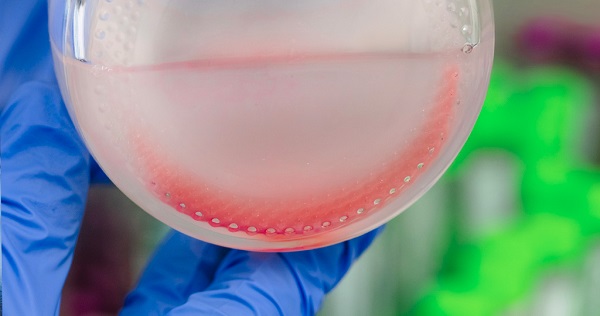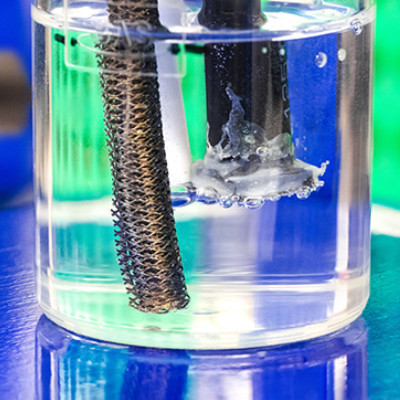A biological method that produces metal nanoclusters using the electroactive bacterium Geobacter sulfurreducens could provide a cheap and sustainable solution to high-performance catalyst synthesis for various applications such as water splitting.
Metal nanoclusters contain fewer than one hundred atoms and are much smaller than nanoparticles. They have unique electronic properties but also feature numerous active sites available for catalysis on their surface. There are several synthetic methods for making metal nanoclusters, but most require multiple steps involving toxic substances and harsh temperature and pressure conditions.
Biological methods are expected to deliver ecofriendly alternatives to conventional chemical synthesis. Yet, to date, they have only led to large nanoparticles in a wide range of sizes. “We found a way to control the size of the nanoclusters,” says Rodrigo Jimenez-Sandoval, a Ph.D. candidate in Pascal Saikaly‘s group at KAUST.

Image of the bacteria suspended in solution.
Having previously shown that the surface of electroactive bacterial cells could serve as a support for single metal atoms, Saikaly’s team explored the creation of biohybrid materials. These consisted of palladium nanoclusters anchored to the bacterial surface of G. sulfurreducens cells. This bacterium, readily found in soil, can transfer electrons to metals present outside the cell and can also conduct electricity when grown on an electrode of a microbial electrochemical system. In this project, it acted as a reducing agent and a conductive scaffold for the nanoclusters.
Drawing from nanoparticle chemical synthesis, the researchers decided to control the metal precursor concentration in their setup, and their attempt paid off, Jimenez-Sandoval says. “To come up with this idea, we had to think of G. sulfurreducens as a chemical entity instead of a biological entity.”
They discovered that adding the metal precursor step by step was the key to fine-tuning nanocluster size and distribution and, ultimately, catalytic performance.
As a proof of concept, the researchers evaluated the catalytic performance of the as-synthesized nanoclusters anchored to the bacterial surface for the overall water-splitting reaction, which involves electrochemically breaking down water into gaseous hydrogen and oxygen. The nanoclusters outperformed benchmark platinum- and iridium-based catalysts used for the hydrogen and oxygen evolution reactions in alkaline solutions.
“These results have very important implications in real life applications because a catalyst synthesized with a biological method is not only cheaper and simpler but also greener,” Jimenez-Sandoval says.
The team is now working to produce a biohybrid catalyst that does not rely on noble metals but a more abundant and cheaper material to enhance the sustainability of their strategy.
Read the original article on King Abdullah University of Science and Technology (KAUST).
